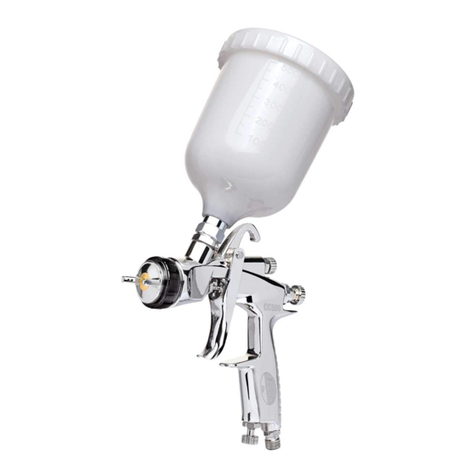
6Eastwood Technical Assistance: 800.343.9353 >> tech@eastwood.com
GUN SET-UP AND OPERATION
The Eastwood Professional Undercoating Gun is designed to be Dual-Purpose with the ability to spray
heavy bodied materials, or configured for lighter, thinner materials.
The Gun is supplied pre set-up to spray heavy materials and coatings such as undercoating, bedliner,
sound proofing and heat resistant materials.
For this type of heavier, thicker material, the best performance can be expected by spraying directly
through the Nozzle and without the Wand attachments.
When applying thinner, rustproofing, or wax-based materials, the 5’ x 1/4” accessory Wands work
very well for reaching into deep and hard to access areas.
Refer to the specific Set-Up for each type of
material is described below:
• Remove all components from carton,
identify them and become familiar with
their purpose.
GUN SET-UP FOR THICKER BODIED MATERIALS
(FIG 3):
ANozzle – Leave in place when applying
thicker materials.
BMaterial Flow Control Knob –
Rotating the Knob Clockwise will decrease the rate of material flow. Rotating the Knob Counter-
Clockwise will increase the rate of material flow.
CAtomization Control Knob – Rotating the Knob Clockwise will reduce the atomization of mate-
rial, creating a rougher finish texture. Rotating the Knob Counter-Clockwise will increase the
atomization, creating a smoother finish texture.
DAir Flow Control – Rotating the Control Clockwise (As viewed from left side of gun) will reduce
the internal air flow. Rotating the Knob Counter-Clockwise (As viewed from left side of gun) will
increase the internal air flow.
FIG. 3FIG. 3







































